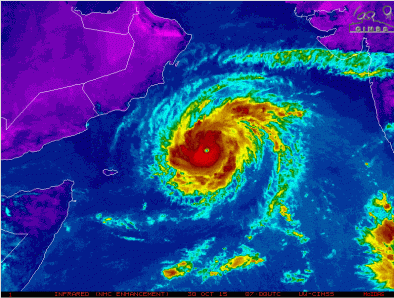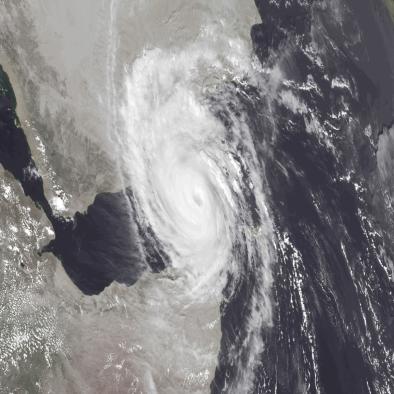Science Source
A Climatology of Arabian Sea Cyclonic Storms
- Estbalishes the paucity of information on cyclones in the Arabian Sea, due in part to the fact that only 1 or 2 occur each year and few become strong storms
- Says the study was motivated by several intense Arabian storms that did form and make landfall in the past 30 years, with large impacts, which motivates this new study of the basin.
- Reviews conclusions of earlier studies and identifies the large-scale features associated with Arabian tropical cyclone variability on seasonal time scales
- Analyzes the relationship between large-scale environmental variables and seasonal storm frequency, supporting conclusions from work completed more than 40 years prior
- Investigates the year-to-year changes in premonsoon storm frequency and finds that May (June) storms are associated with an early (late) onset of the southwest monsoon
- Findings also demonstrate that November cyclones (the month when the majority of postmonsoon cyclogenesis occurs) primarily form during periods when the Bay of Bengal experiences a broad region of high sea level pressure, implying that November storms form in either the Arabian Sea or the Bay of Bengal but not in both during the same year
- Analyzes changes in genesis potential index and finds that long-term variability in the potential for a storm to form is dictated by changes in midlevel moisture
Related Content
Science Source
| Springer
Monitoring and Prediction of Tropical Cyclones in the Indian Ocean and Climate Change
U. C. Mohanty, M. Mohapatra, O. P. Singh et al
Headline

Feb 1, 2016 | WxShift
Cyclone Chapala Threatens Yemen With Flooding Rains
Headline

Feb 1, 2016 | VICE News
Nearly 40,000 Displaced After Cyclone Chapala Slams Into Yemen
Science Source
| Nature Climate Change
Trade-off between intensity and frequency of global tropical cyclones
Nam-Young Kang & James B. Elsner


